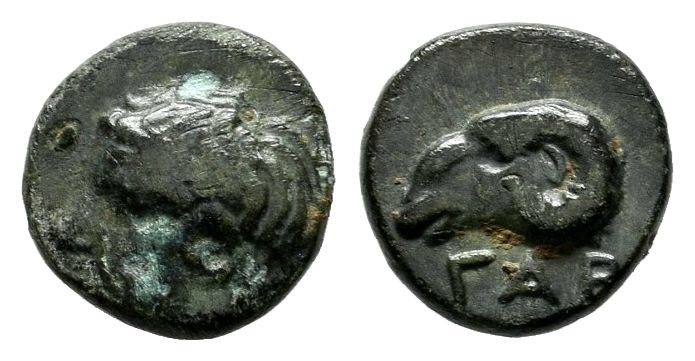Gargara was an ancient Greek city on the southern coast of the Troas region of Anatolia. It was initially located beneath Mount Gargaron, one of the three peaks of Mount Ida. At some point in the 4th century BCE the settlement moved approximately 5.8 km south of Koca Kaya to a site on the small coastal plain.
The local antiquarian writer Demetrius of Scepsis (ca. 205-130 BC) relates that Gargara received an influx of settlers who were forcibly moved from their home in Mysia, Miletoupolis, by 'the kings' (presumably those of Bithynia) in the late 3rd or early 2nd century BCE. Miletoupolis was a semi-Greek settlement, and so Demetrius relates that as a result of this influx of immigrants there are hardly any Aeolians left in Gargara.
While Gargara continued to exist in the Roman period, we hear about it primarily in the context of Latin literature, since it became a by-word for agricultural prosperity in Latin poetry following Virgil's reference to it in the Georgics. The city appears to have been continuously occupied until at least the 9th century, and perhaps as late as the 14th. It was a suffragan bishopric of the metropolis of Ephesus for which we know the names of three of its bishops: John (518), Theodorus (553), and Ephraim (878).
The local antiquarian writer Demetrius of Scepsis (ca. 205-130 BC) relates that Gargara received an influx of settlers who were forcibly moved from their home in Mysia, Miletoupolis, by 'the kings' (presumably those of Bithynia) in the late 3rd or early 2nd century BCE. Miletoupolis was a semi-Greek settlement, and so Demetrius relates that as a result of this influx of immigrants there are hardly any Aeolians left in Gargara.
While Gargara continued to exist in the Roman period, we hear about it primarily in the context of Latin literature, since it became a by-word for agricultural prosperity in Latin poetry following Virgil's reference to it in the Georgics. The city appears to have been continuously occupied until at least the 9th century, and perhaps as late as the 14th. It was a suffragan bishopric of the metropolis of Ephesus for which we know the names of three of its bishops: John (518), Theodorus (553), and Ephraim (878).
Modern location:

